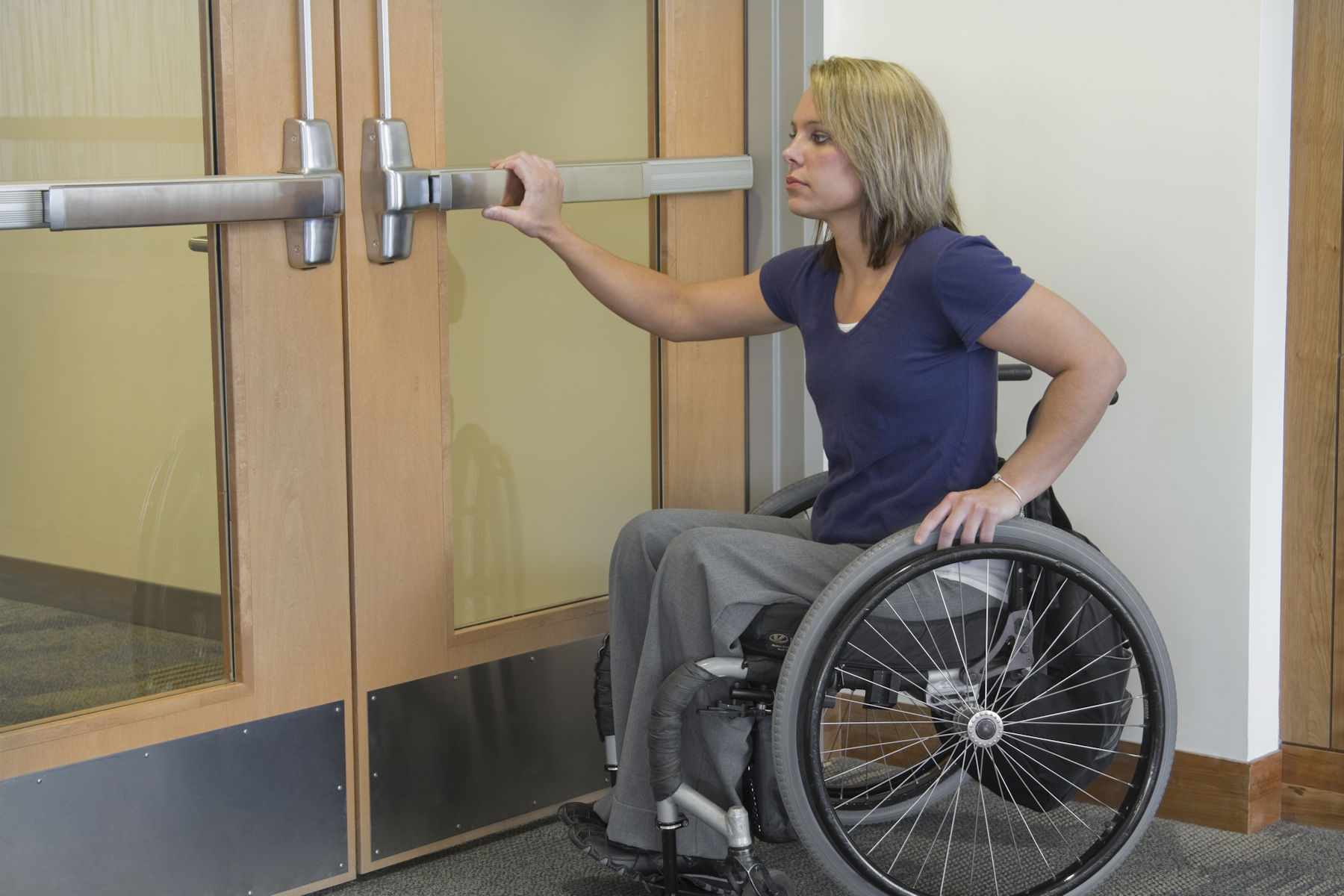 Do you know…
Do you know…
- The minimum required clear opening width for a single door?
- How to measure the clear opening width for a pair?
- The formula for calculating the actual clear opening width of a doorway?
- How projecting hardware affects the clear opening width?
- When a door is required to have 18 inches of latch-side maneuvering clearance?
One of the Webinar Wednesday sessions conducted by our national training team will help clarify these concepts – read more below (all times are Eastern Standard Time):
- 10:00am – 11:30am: Low Energy Automatic Operator Fundamentals
- Automatic operators can help facilities and people with accessibility issues and touchless access preferences, but selecting the correct operator can be confusing. Is it permissible to use a motion detector to activate the door? Does a wave to activate actuator meet the Knowing Act requirements of the ANSI standards? Join us as we explore the differences between Low Energy automatic operators and Full Power (High Energy) automatic operators. Learn what the standards require for proper speed adjustments and opening force requirements for doors with automatic operators. Find out which LCN operators provide the most adjustability to meet building owner needs. Jeff Tock, AHC and Regional Training Manager for Allegion, will guide you through the exercise of choosing the operator that can best meet your needs.
- 12:00pm – 1:30pm: Delayed Egress
- One of the golden rules in door hardware is that a lock should never impede egress, but there are specific situations where locking hardware is allowed to do so. In this presentation we will review “Delayed Egress,” a special code-regulated application that inhibits immediate passage through a door opening. We will explain what different codes say about this function with emphasis on where it can and cannot be used. We will give an overview of two of the most commonly used products to achieve delayed egress along with additional resources for more detailed requirements. John Dalrymple, AHC, and our End User Training Manager, will lead this discussion.
- 2:00pm – 3:00pm: Accessible Buildings: The Critical Requirements for Clear Width and Maneuvering Clearances
- Although it has been thirty years since the Americans with Disabilities Act (ADA) defined what makes for an accessible commercial building, some buildings—especially structures built before 1990—may fall a little short in meeting the clear width and maneuvering clearance requirements for openings. In this session, learn what those requirements are, why they are so important to an individual with disabilities, and how to check and solve for compliance. Jeff Tock, our End User Training Manager, will be your guide.
- 4:00pm – 5:00pm: Keying Schematics
- Labeling the different types of keys in a master key system can be challenging and confusing. If you’ve ever wondered if there was a systematic industry standard for developing and assigning these labels, this webinar is for you. Our Schlage Training Manager, Gordon Malczewski, will show you how to use the Standard Key Coding System to assign key symblols used on various levels of a master key system.
You need to login or register to bookmark/favorite this content.





Lori after my wife was in a wheelchair for over 2 years, my thoughts from just reading the requirements have changed. Rent a wheel chair, for your office to use, and any person writing specifications or detailing hardware be confined to the chair for half day. They will be amazed as to how their thoughts have changed. The accessibility in and out of restrooms, door closers, thresholds will get a lot more thought as you specify or detail a project…Just a thought
I completely agree!
– Lori